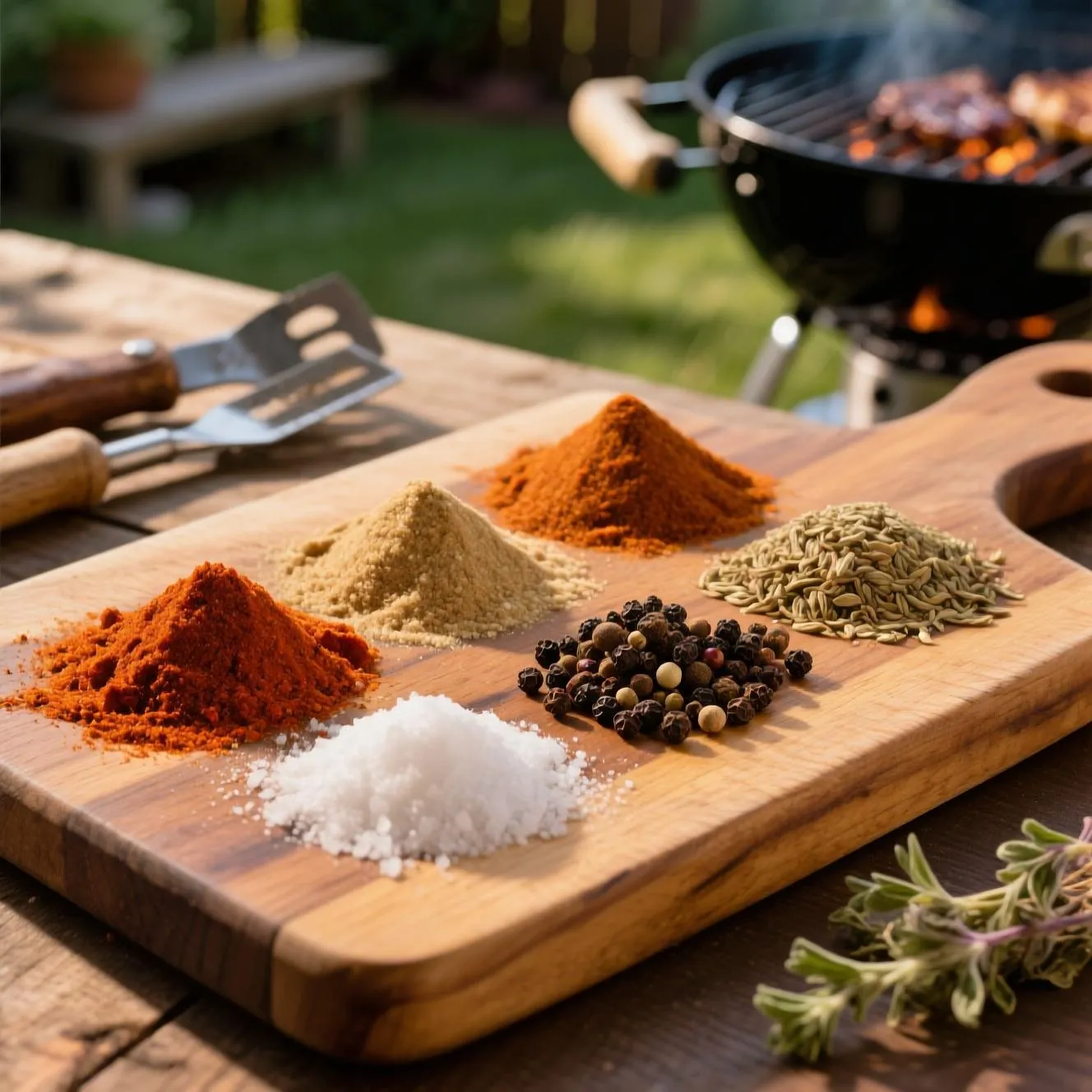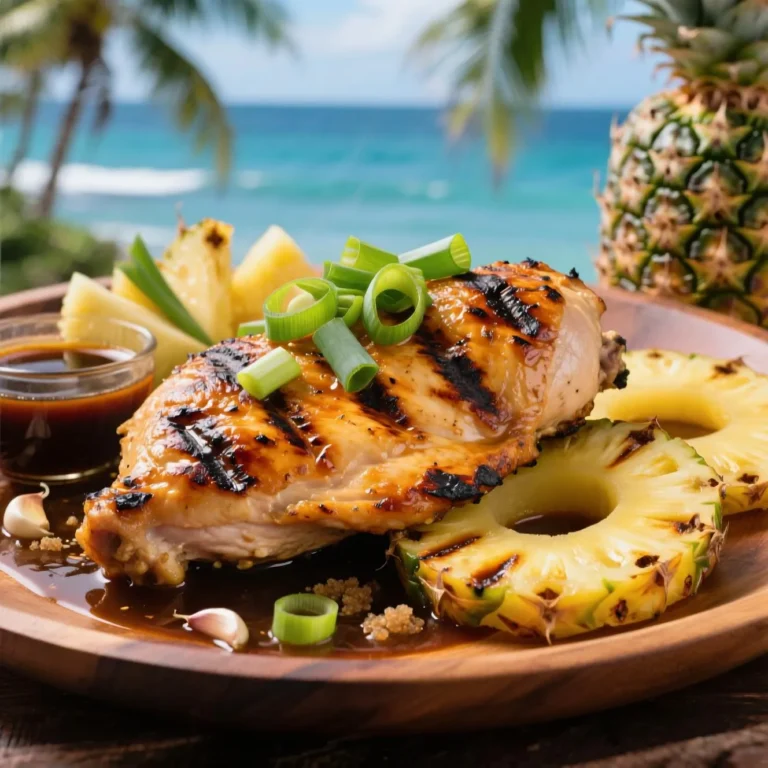Savor the Flavor – Try Our Best Recipes Today!

The Ultimate Guide to BBQ Seasoning: Transform Your Grilling Game in 2026
The first time I accidentally grabbed cinnamon instead of paprika while making my grandfather’s BBQ seasoning recipe, I thought I’d ruined an entire rack of ribs. Twenty minutes later, my family was demanding the “secret ingredient” that made the meat taste like summer and nostalgia had a delicious baby. That happy accident taught me something crucial: great barbecue isn’t just about the smoke and heat—it’s about the symphony of spices dancing on your taste buds.
Understanding the Foundation of BBQ Seasoning
Picture this: you’re standing at your spice cabinet, staring at dozens of jars, wondering which combination will transform that beautiful brisket into something memorable. The truth is, every pitmaster started right where you are now, and the journey from confusion to confidence begins with understanding what makes BBQ seasoning truly special.
The backbone of any respectable barbecue rub consists of four essential elements that work together like a well-rehearsed band. Salt acts as the conductor, enhancing every other flavor while helping to tenderize the meat. Sugar provides that gorgeous caramelization we call “bark,” creating those crispy, flavorful edges that make people fight over the corner pieces. Paprika brings color and a subtle sweetness that won’t overpower, while black pepper adds just enough bite to keep things interesting.
The Science Behind BBQ Seasoning Magic
When heat meets seasoning, something remarkable happens. The Maillard reaction—that beautiful browning process—transforms simple spices into complex flavor compounds. Sugar caramelizes at around 320°F, creating hundreds of new taste molecules that didn’t exist in your original rub. Meanwhile, fat-soluble compounds in spices like cumin and coriander release their aromatic oils, penetrating deep into the meat’s surface.
Temperature plays puppet master to your spices. Low and slow cooking allows volatile compounds to gradually infuse, while high-heat grilling creates an instant crust that locks flavors inside. Understanding this relationship helps explain why the same BBQ seasoning can taste completely different on smoked versus grilled meats.
Regional BBQ Seasoning Styles That Define America
Travel across America, and you’ll discover that BBQ seasoning tells the story of each region’s history, agriculture, and cultural influences. It’s like a delicious geography lesson written in spice.
Carolina’s Tangy Touch
In the Carolinas, BBQ seasoning often takes a backseat to sauce, but don’t be fooled. Eastern Carolina pitmasters keep their rubs simple—salt, black pepper, and red pepper flakes—letting the whole hog and vinegar-based mop do the talking. Meanwhile, South Carolina’s unique mustard-influenced seasonings incorporate turmeric and dry mustard powder, creating that distinctive golden hue.
Texas Bold and Beautiful
Everything’s bigger in Texas, including the flavor profiles. Texas BBQ seasoning embraces simplicity with authority. The classic Dalmatian rub—just coarse salt and cracked black pepper—proves that sometimes less really is more. Central Texas pitmasters might add a whisper of garlic powder, but anything more is considered showing off. This minimalist approach lets the quality of the beef shine through, which makes sense when you’re working with prime brisket.
Kansas City’s Sweet Symphony
Kansas City BBQ seasoning reads like a spice cabinet inventory list, and that’s exactly the point. Brown sugar leads the charge, followed by paprika, chili powder, cumin, garlic powder, onion powder, and often a surprise guest like coffee or cocoa powder. This “more is more” philosophy creates layers of flavor that complement the region’s thick, molasses-based sauces.
Memphis Dry Rub Royalty
Memphis earned its reputation by perfecting the dry rub game. Their BBQ seasoning blends typically feature:
- Generous amounts of paprika for color
- Brown and white sugar for balance
- Cayenne and black pepper for heat
- Oregano and thyme for unexpected herbaceous notes
- Celery salt for that distinctive Memphis tang
Creating Your Signature BBQ Seasoning Blend
Developing your own BBQ seasoning is like learning to paint—you need to understand color theory before creating your masterpiece. Start with the base ratio of 2:2:1:1 (paprika, brown sugar, salt, black pepper), then let your taste buds guide the artistic process.
Building Blocks for BBQ Seasoning Success
The Sweet Elements: Brown sugar remains the classic choice, but don’t overlook turbinado sugar’s molasses notes or maple sugar’s autumn warmth. Some competition teams swear by adding a tiny amount of vanilla powder—just enough to make judges wonder what makes their ribs different.
The Heat Spectrum: Cayenne offers clean, direct heat, while chipotle powder brings smoke and complexity. Ancho chili powder adds fruitiness, and ghost pepper powder… well, use that when you want to test friendships. Layer different heat sources to create depth rather than just fire.
The Aromatics: Garlic and onion powder form the aromatic foundation, but consider adding granulated honey, smoked salt, or even freeze-dried herbs. One pitmaster I know adds pulverized dried mushrooms to his BBQ seasoning for an umami bomb that nobody can quite identify.
The Art of Customization
Your BBQ seasoning should reflect your personality and preferences. Love coffee? Add espresso powder for bitter complexity that pairs beautifully with beef. Obsessed with citrus? Dried lemon peel brightens pork like sunshine. The key is making small adjustments and keeping notes—think of it as your spice diary.
Application Techniques That Make the Difference
Even the world’s best BBQ seasoning won’t save poorly applied rub. Timing, technique, and temperature all influence how your seasonings perform their flavorful magic.
Timing Your BBQ Seasoning Application
The “when” matters almost as much as the “what.” For large cuts like brisket or pork shoulder, applying BBQ seasoning 12-24 hours ahead allows salt to penetrate deeply, essentially dry-brining the meat. For chicken and fish, 2-4 hours prevents the salt from drawing out too much moisture. Steaks and chops? Anywhere from 40 minutes to 2 hours hits the sweet spot.
The Perfect Application Method
Forget sprinkling—think snow globe. Hold your hand 8-10 inches above the meat and let the BBQ seasoning fall evenly, rotating the meat rather than moving your hand. This prevents those flavor dead zones that leave one bite bland and the next overpowering. Apply one moderate layer, wait five minutes for it to start adhering, then add a second lighter layer for insurance.
The “wet hand, dry hand” method prevents the dreaded claw of caked-on seasoning. Use one hand to handle the meat and another for sprinkling. A light coating of mustard or oil helps BBQ seasoning stick without adding competing flavors—think of it as primer before painting.
Storage and Shelf Life Secrets
Your carefully crafted BBQ seasoning deserves proper storage to maintain its potency. Light, heat, air, and moisture are the four horsemen of the spice apocalypse, gradually stealing flavor and aroma from your blend.
Maximizing BBQ Seasoning Freshness
Store your BBQ seasoning in airtight containers away from the stove, preferably in a cool, dark pantry. Glass jars work better than plastic, which can absorb and transfer flavors. Label everything with mixing dates—trust me, future you will appreciate current you’s organizational skills.
Whole spices ground fresh create more vibrant BBQ seasoning, but pre-ground convenience has its place. If buying pre-ground, purchase small quantities from shops with high turnover. That dusty jar of paprika from 2019 isn’t doing your ribs any favors.
Most BBQ seasoning blends maintain peak flavor for 6-12 months. The sniff test tells all—if your rub smells like cardboard instead of a spice bazaar, it’s time to start fresh.
Common BBQ Seasoning Mistakes to Avoid
After years of teaching backyard BBQ classes, I’ve witnessed every seasoning catastrophe imaginable. Learning from others’ mistakes saves time, money, and disappointing dinners.
Over-Salting Syndrome
Salt amplifies everything, but too much transforms your masterpiece into a salt lick. Remember that BBQ seasoning continues to concentrate as moisture evaporates during cooking. Start conservative—you can always add more at the table, but you can’t unsalt a brisket.
The Sugar Burn Dilemma
Sugar-heavy BBQ seasoning chars quickly over direct heat. If grilling hot and fast, apply sugary rubs during the last 15-20 minutes, or use two-zone cooking to prevent bitter, blackened exteriors hiding perfectly cooked meat.
Spice Imbalance Issues
Loading your BBQ seasoning with one dominant flavor creates monotony. Even if you adore smoked paprika, using it as 50% of your blend overwhelms subtler spices. Think orchestra, not solo act—every instrument should contribute to the overall performance.
Advanced BBQ Seasoning Techniques
Once you’ve mastered the basics, these advanced techniques separate weekend warriors from seasoning sensei.
Layering Flavors
Apply different BBQ seasoning blends at various cooking stages. Start with a salt-heavy base rub, add a middle layer with aromatics halfway through cooking, and finish with a sugar-forward blend for final caramelization. This creates complexity impossible with single applications.
Blooming Spices
Mixing BBQ seasoning with a small amount of oil and gently heating activates fat-soluble compounds before application. This technique, borrowed from Indian cuisine, intensifies flavors and helps seasoning adhere better to lean cuts.
Compound Butters and Pastes
Transform dry BBQ seasoning into compound butter for finishing steaks or create pastes with oil and citrus juice for marinading. These variations expand your seasoning’s versatility beyond traditional dry rub applications.
Conclusion: Your BBQ Seasoning Journey
Great BBQ seasoning isn’t about following someone else’s recipe to the letter—it’s about understanding principles, experimenting fearlessly, and developing your own signature style. Whether you prefer the elegant simplicity of salt and pepper or the complex symphony of a dozen spices, your perfect blend exists somewhere between tradition and innovation.
Start with the fundamentals, respect the science, and don’t be afraid to color outside the lines. That accidental cinnamon in my grandfather’s recipe became my signature touch, the element that makes people ask, “What’s different about your ribs?” Your BBQ seasoning journey might begin with following recipes, but it truly starts when you trust your palate enough to improvise.
Remember, every pitmaster legend started as someone standing in their backyard, experimenting with spices and fire. Your BBQ seasoning evolution is a delicious adventure waiting to unfold, one perfectly seasoned bite at a time. So grab those spices, fire up the grill, and start writing your own flavorful chapter in barbecue history.



